1 Layout preparation & import
Prepare layout for Multiple records (generate layout)
Note: This feature uses InDesigns standard behaviour when handling multiple records per page. It still has limitations and some recorded bugs (on Adobe’s side). We recommend using multiple merge with existing layout.
When to use this mode
- You have a layout document with one page.
- You have elements on your page to be repeated automatically.
When not to use this mode
- If you need custom styling in the merge
- If you need hyperlinks
- If you like to use multiple setups
- If you like to use Automator actions
- If you like to use GREP text actions
- Basically … if you like to use any advanced feature of MyDataMerge
Prepare the layout
- Make sure you only have one page in your document, spreads turned off.
- Prepare your layout with every placeholder you need and move it to where you need it – leave enough room for the duplicates to be generated.

Note: Every element on the page will be duplicated – make sure to remove anything else from the page (put it on the master page for example).
2 MyDataMerge configuration
Configurations
What are setups and why do i need them?
Once you open a placeholders editor you will see that you can select a replacement type to show MyDataMerge what kind of data you want to inject [1] to that placeholder and you can select a setup [2]. Initially there’s a setup called “Initial setup” you can work with. But you can add as many others as you like.
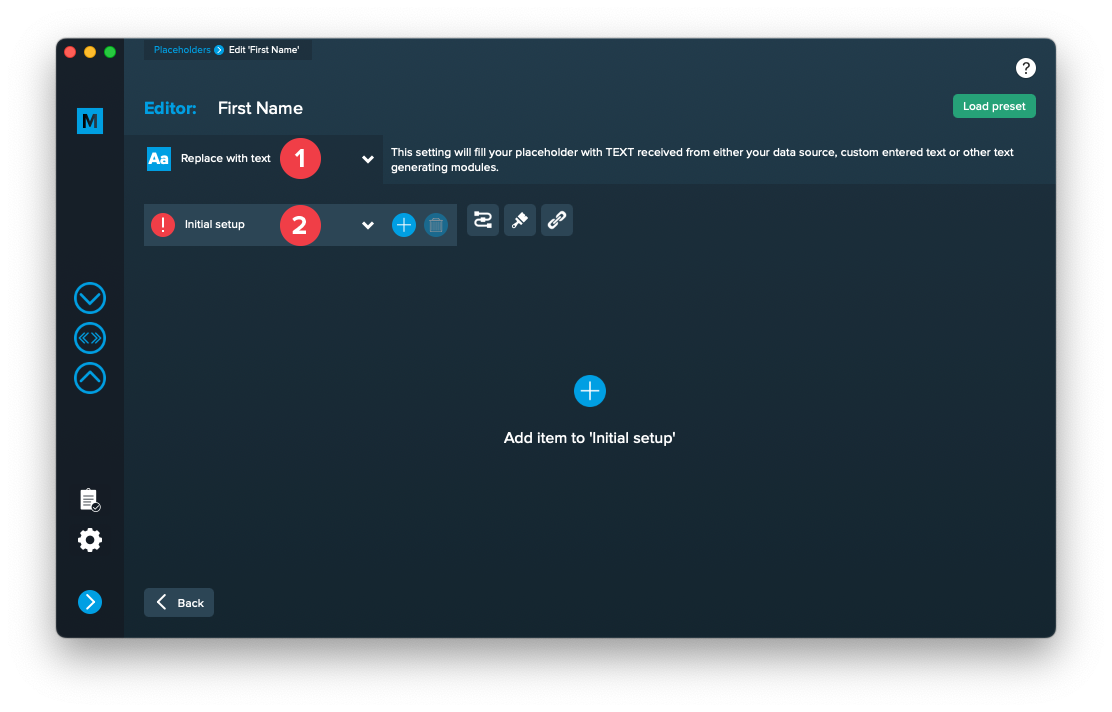
In the center area (“Add item to ‘Initial setup'”) you can configure the output to be injected in the merge process dynamically. Each setup can have custom style settings (brush icon) and a custom hyperlink setting (chain icon).
By default, only the selected setup is used for the merge process. But setups become really powerful once you add them in a row (if first fails use second then third …) (path icon) or use them based on conditions (“If ‘First Name’ is ‘John’ then use this, otherwise use that).
Add multiple setups
For every placeholder you can add more than one setup.
If you have a well formed database with no missing data, usually one setup is enough. More than one setup will come in handy in situations where this isn’t the case or where you want to apply different styles.
Example:
You have a subject line in a letter where you want to output a salutation and last name e.g. “Dear Forrest” where “Forrest” is the first name and comes from the database and “Dear” is a static text. You can do this easily with a simple setup of your placeholder:
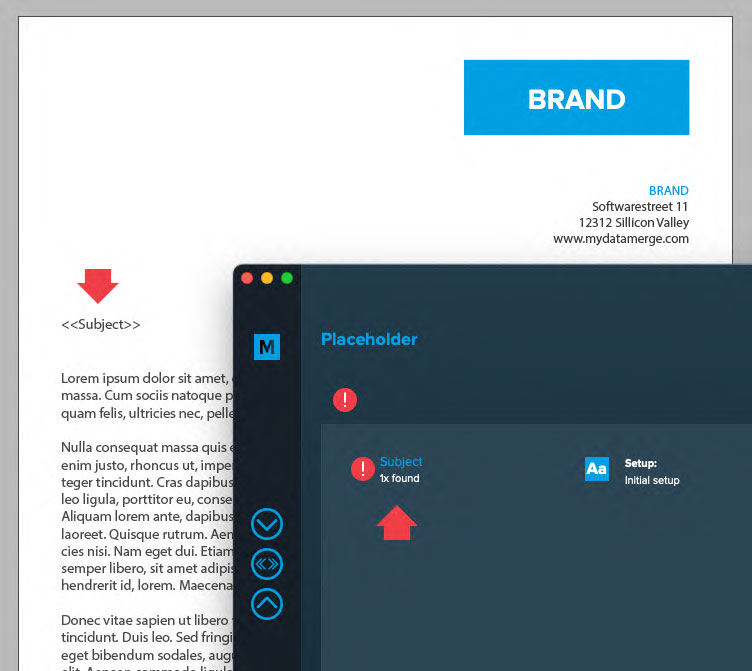
In the below image you can see the setup to output “Dear [First Name]”, a static text for “Dear ” [1] and a dynamic datasource element for the first name [2]. The output can be checked in the preview [3]: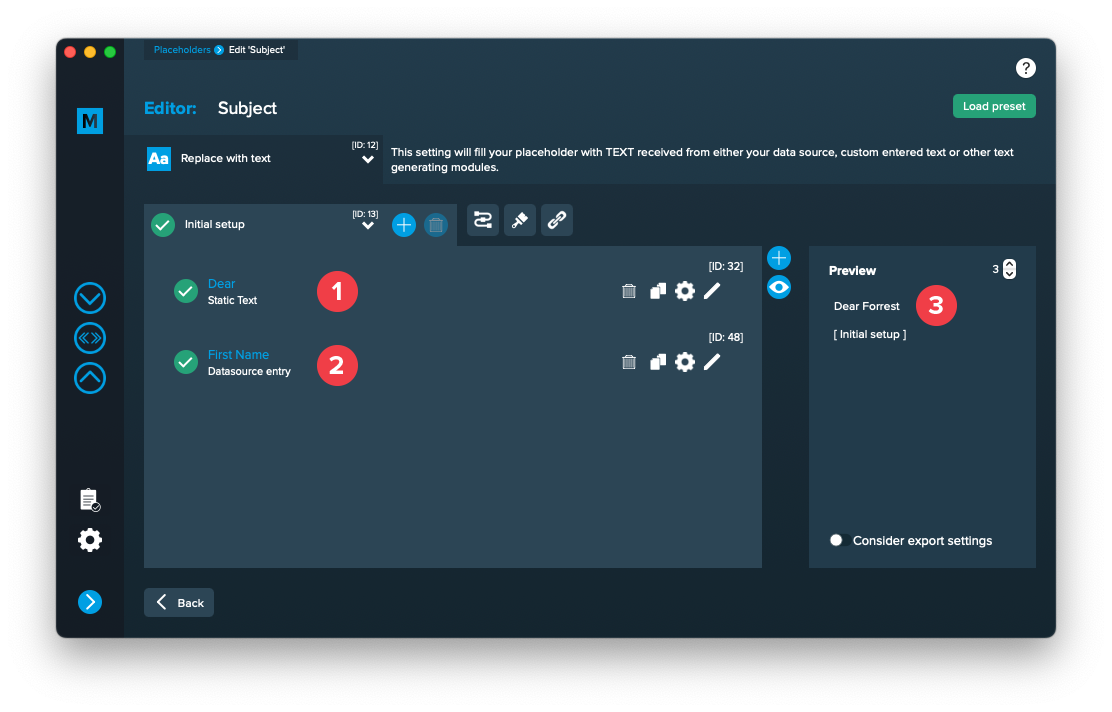
Now imagine you don’t have a first name, then you’d like to output “To whom it may concern” which you can do with a second setup. So we add another setup here and give it an appropriate name [1]:

Then we configure it to output the static text “To whom it may concern”.
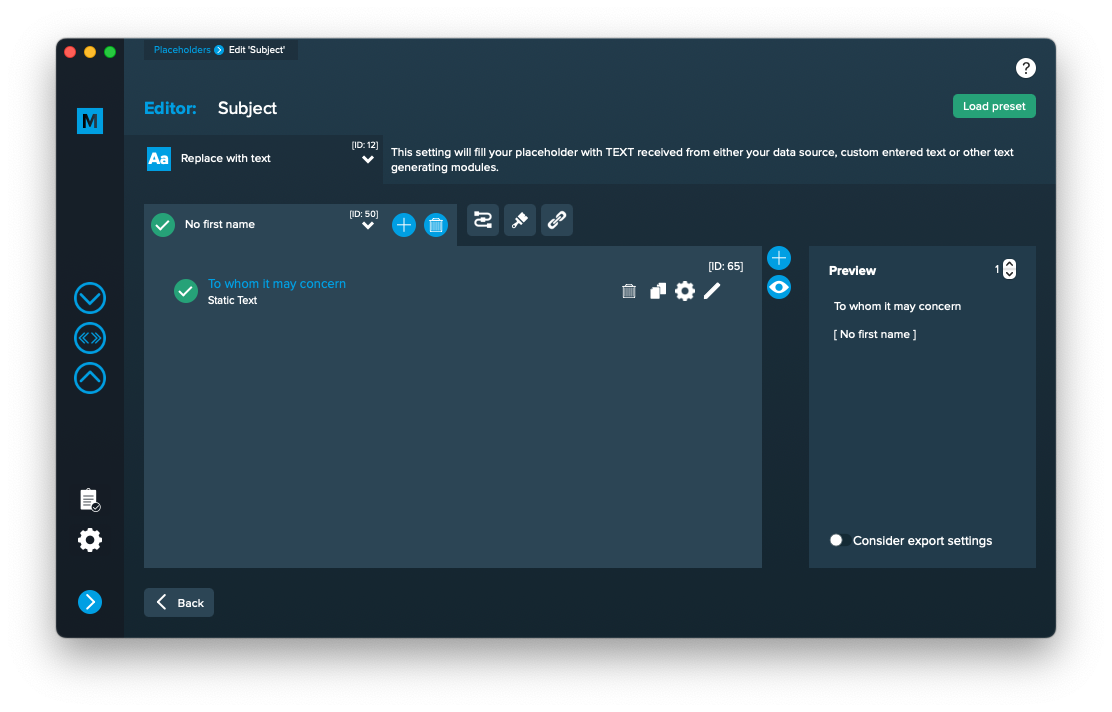
Right now, MyDataMerge would output “To whom it may concern” for every data record, because it’s the currently selected setup. To allow multiple setups to be processed you need to enable the process chain [1 + 2] as shown in the image below. Then all setups in the right table [3] will be processed from top down. If first setup fails (e.g. because first name is missing) then use second one and so on.
You can move unused setups to the left table, they will have no effect there. If the last setup in the right table fails, the “Action if last setup fails” will be executed which you can select at the bottom.
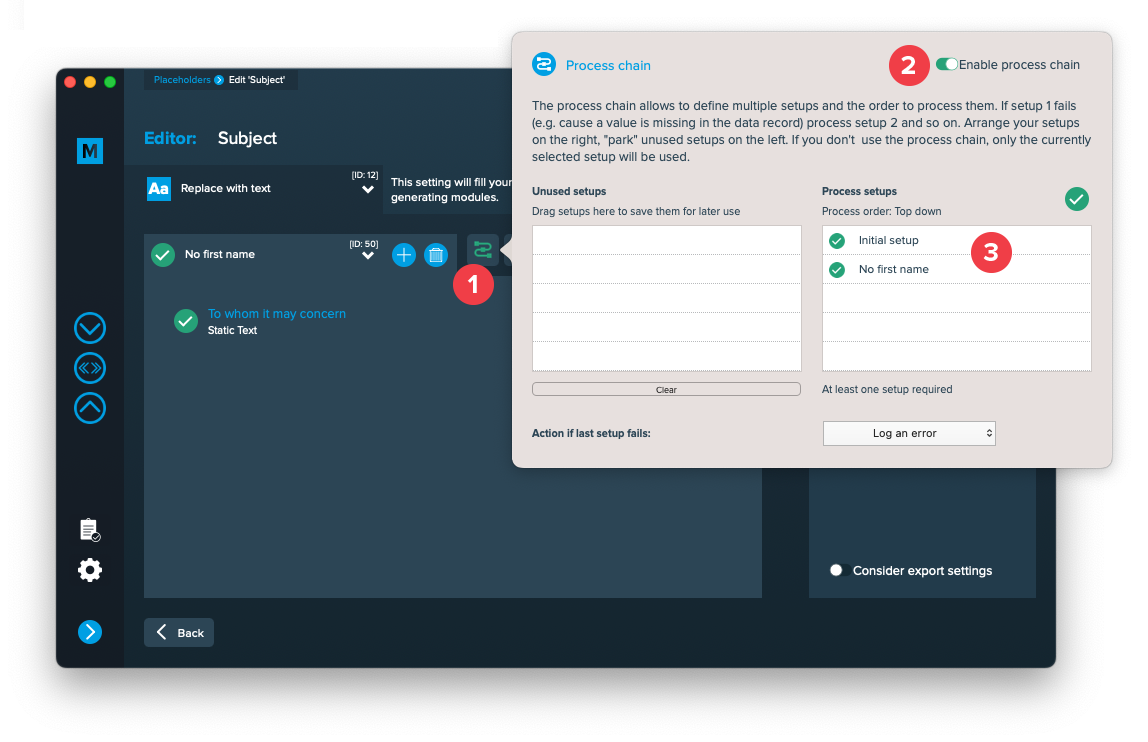
Note: You can add more control by adding conditions (on when it should be executed) to each setup.
3 Export
Filetypes
Export to Adobe InDesign® files
If you want to export to Adobe InDesign files go to export > filetype and select the preferred filetype from the dropdown.
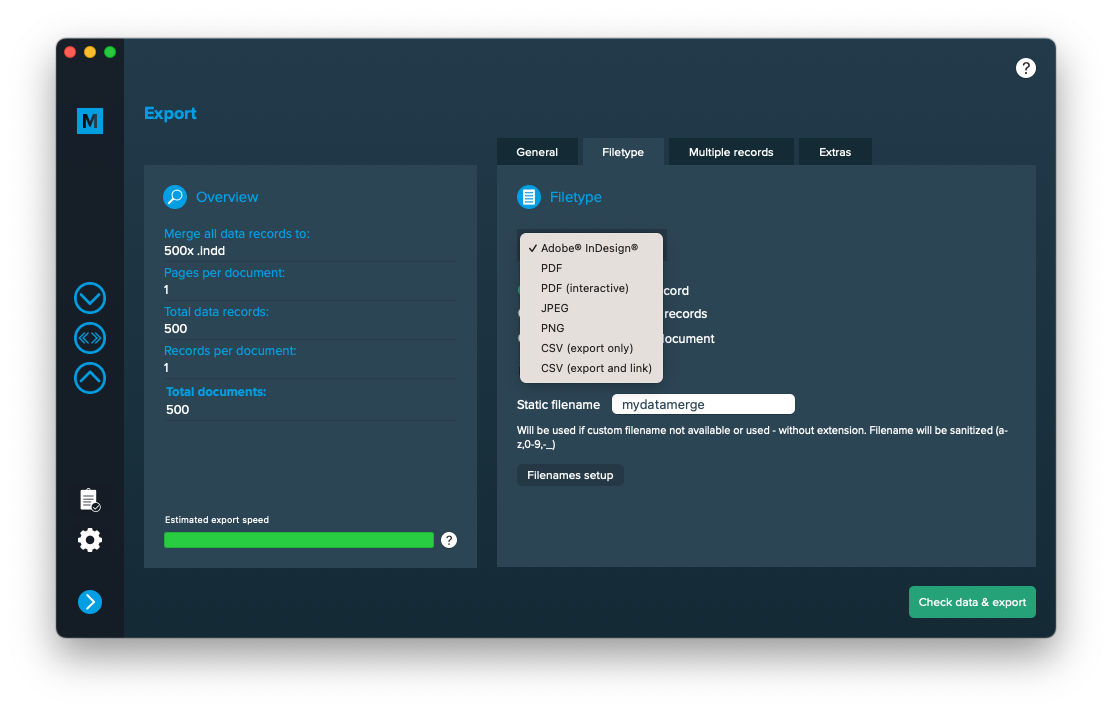
Use a static filename with counting number
You can set a static filename in Export > Filetype > “Static filename” field.
With static filenames, every file will get the same name and a counting number will be attached. For example if you define static filename to be “mydatamerge” then files will be named like this:
- mydatamerge_1
- mydatamerge_2
- mydatamerge_3
- and so on
Please note that static filenames only allow a-z, 0-9, – and _ characters. Other characters will be removed or replaced.
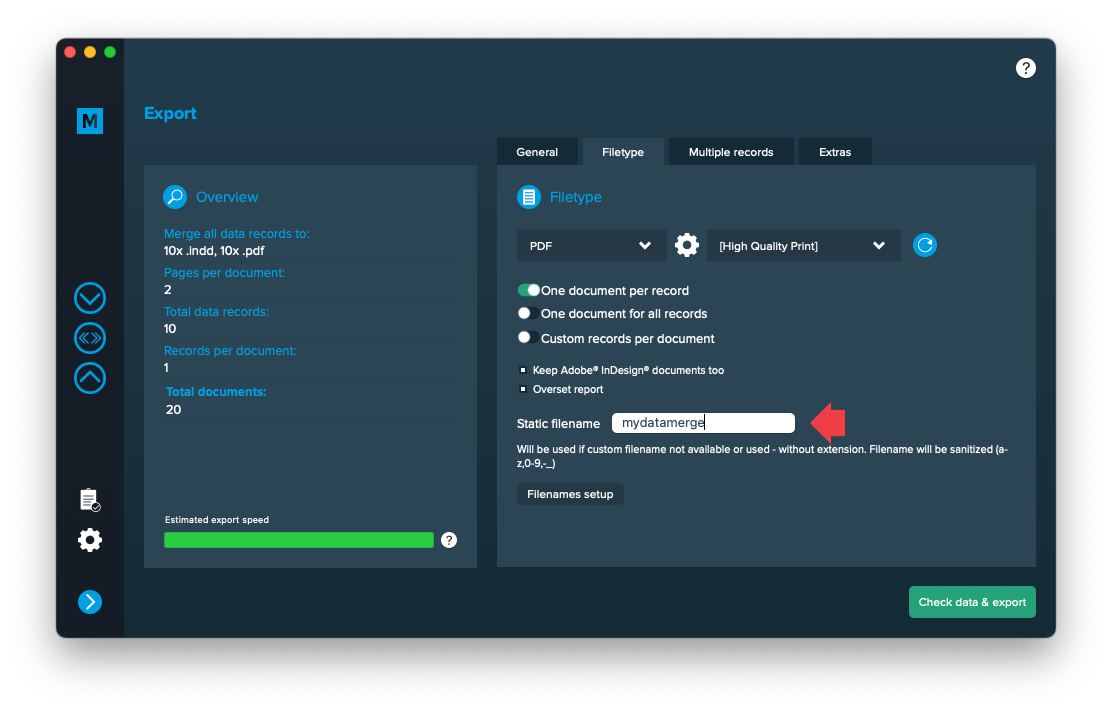
Multiple records
Multiple records (generate layout)
Go to Export > Multiple records and active “MR per page (generate layout)”. If you cannot select, please check again if your layout matches the requirements.

On the gear icon on the right, you can define the grid (direction and distances of where the duplicates should go to)
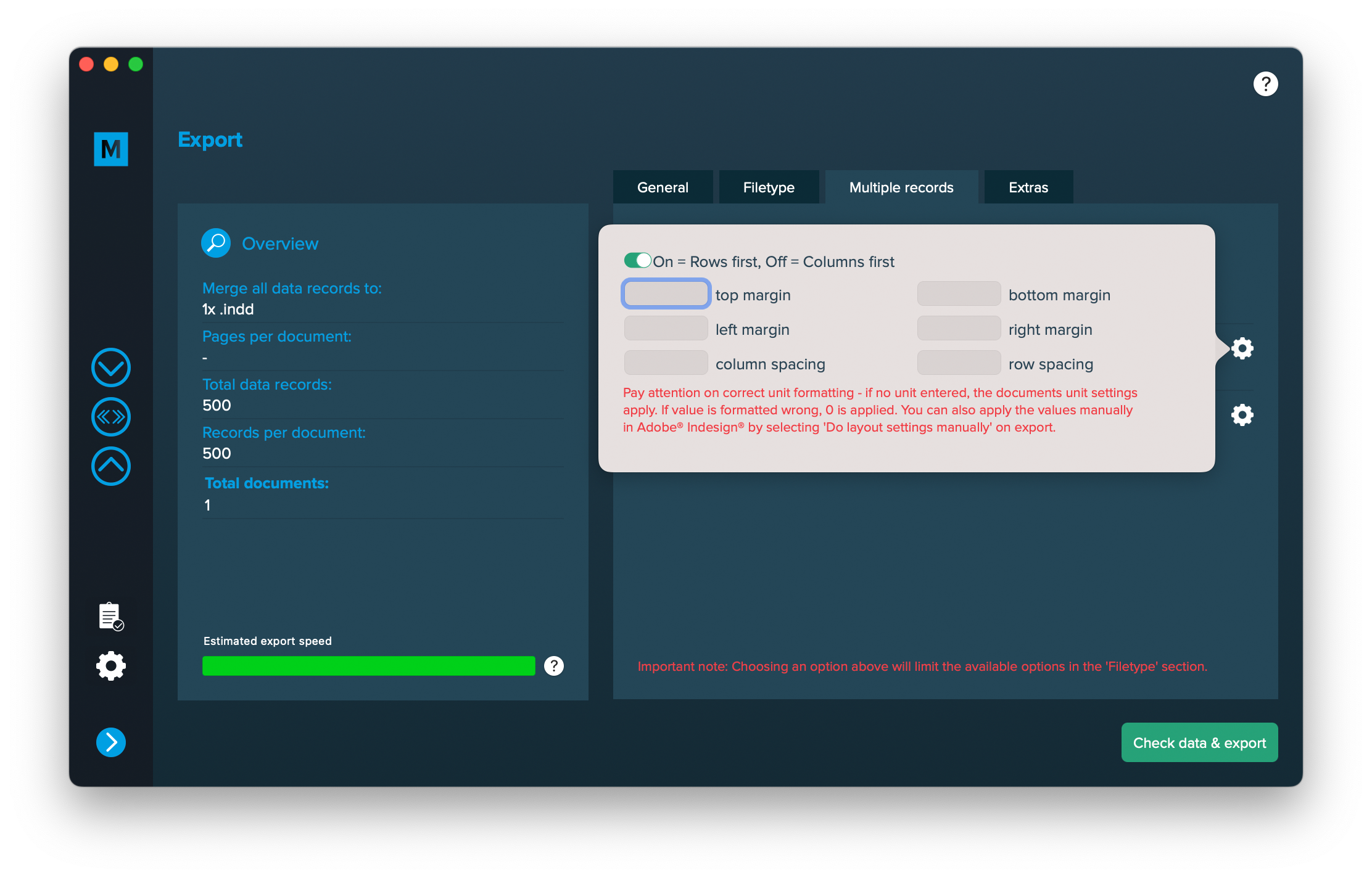
Note: Pay attention on correct unit formatting – if no unit entered, the documents unit settings apply. If value is formatted wrong, 0 is applied. You can also apply the values manually in Adobe® Indesign® by selecting ‘Do layout settings manually’ on export.